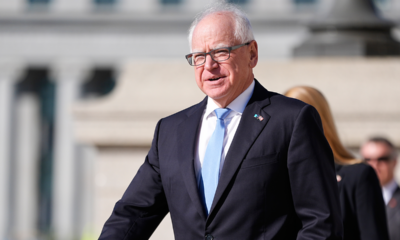Displayed at the Utah Pride Center is a quilt panel honoring Michael Spence, also known as the drag queen Tracy Ross. This display helped me connect the recent news of Donald Trump’s reelection with a reminder of a past defined by marginalization and a future where hard-won rights are again at risk.
During his first term, the Trump administration worked to undermine LGBTQ+ protections. I fear a second Trump administration will roll back rights for LGBTQ+ citizens, particularly for transgender individuals.
But we have been here before. By the 1980s, few states recognized hate crimes against LGBTQ+ individuals. Homosexuality — or sodomy — was criminalized, and many states enacted policies to block lesbian and gay educators from public schools or discussing their private lives at work. Protections in housing and employment in Utah were only won in 2015.
Today, we face a similar fight, though we now have the historical context and resources to help us resist.
Reflecting on Michael Spence’s life and legacy led me back to Utah’s response during the AIDS crisis. Utah did not begin recording cases of HIV/AIDS until 1983 with Robert Michael Painter and one other person. After about six years of deflecting the problem, President Ronald Reagan helped Congress pass its first substantive federal funding with the AIDS Service Demonstration Grants — of which Utah received $6.4 million for research — and then with the CARE Act, named after Ryan White in 1990. While much of the nation exhorted condemnations and cautionary tales about AIDS, I have found no comments on the epidemic from Governors Scott Matheson or Norman Bangerter. Meanwhile, Utah Bureau of Epidemiology Director Craig Nichols refused to connect advocacy groups considered to be too centered on gay and lesbian rights with federal grant funds. Utahns with AIDS were left on their own and could only rely on the state to count them as a statistic to report.
The lack of government support galvanized Utah’s lesbian and gay community to step up to meet the crisis. In 1985, Dr. Patty Reagan founded the Salt Lake AIDS Foundation (now the Utah AIDS Foundation). Other groups, like the People With AIDS Coalition; AIDS Project Utah; Gay and Lesbian Community Center and Clinic; and ACT-UP (AIDS Coalition to Unleash Power) worked to support and educate the public. Tensions often rose between leaders and volunteers, with overlapping missions and limited resources, thus creating friction. Yet, the efforts of activists like Dave Sharpton and Sheldon Spears, mobilized a community determined to survive. Sharpton, along with others, founded Horizon House, a sanctuary for those with HIV/AIDS who had nowhere else to go.
Utah’s first public memorial event was a 1989 candlelight vigil that began at Saint Mark’s Episcopal Cathedral and passed Temple Square before ending at the Salt Palace, where an enormous section of the National AIDS Memorial Quilt was displayed. Religious and civic leaders joined this event, marking a significant moment of public solidarity and inspiring the first Pride march two years later. Another vigil, in 1990, took place in Memory Grove, where hundreds gathered to honor lives lost. These memorials provided a rare, public space for grieving and solidarity amid the ongoing crisis and the humanization of public health statistics. Now annual fundraisers, marathons and walk-a-thons are held across the state.
In my research, I have so far found names for only 366 Utahns who died from AIDS — many who were born and raised in Utah, but were far from home in their last days. Today, the AIDS Memorial Quilt remains a testament to lives cut short and our chosen community’s resilience, standing as both a memorial and a reminder of how far we’ve come.
In the face of a familiar future, I recall the strength that Utah’s lesbian and gay community displayed during the AIDS crisis. While we have come a long way, the familiar challenges ahead require a unified response. Utah’s LGBTQ+ community now has more tools than ever: social media, massive fundraising resources and effective grassroots organizing. The COVID-19 pandemic also strengthened our sense of community and readiness.
As an historian of LGBTQ+ Utah, I am inspired by the strength, unity and resilience that our community has shown throughout history. We have confronted adversity before, from organizing during the AIDS crisis to advocating for marriage equality and nondiscrimination protections — and we can do it again.
Randell Hoffman (he/they) is a historian, preservationist and quilter committed to making history accessible and relevant to diverse communities.
Randell Hoffman (he/they) is a historian, preservationist and quilter committed to making history accessible and relevant to diverse communities. As an independent researcher of Utah’s LGBTQ+ history, Randy focuses on amplifying overlooked narratives and fostering spaces where historical preservation intersects with community empowerment.
The Salt Lake Tribune is committed to creating a space where Utahns can share ideas, perspectives and solutions that move our state forward. We rely on your insight to do this. Find out how to share your opinion here, and email us at voices@sltrib.com.













































